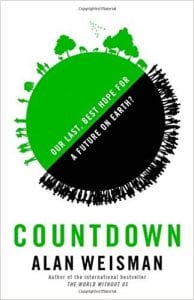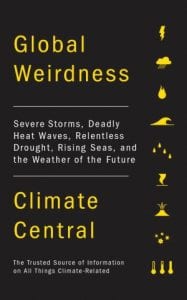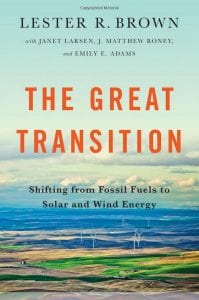 As a “population educator,” I’m often asked to recommend a book on population – one that’s for a general audience (including high school students), covers lots of facets of the issues in an interesting way (environmental impacts, social trends), not just a litany of statistics, and balances often-sobering facts with hope for the future. A tall order? Absolutely, and I’m often at a loss for such a book to suggest. Not anymore. Alan Weisman’s new book, Countdown: Our Last Best Hope for a Future on Earth? is a great read that educates through compelling human stories from around the world.
As a “population educator,” I’m often asked to recommend a book on population – one that’s for a general audience (including high school students), covers lots of facets of the issues in an interesting way (environmental impacts, social trends), not just a litany of statistics, and balances often-sobering facts with hope for the future. A tall order? Absolutely, and I’m often at a loss for such a book to suggest. Not anymore. Alan Weisman’s new book, Countdown: Our Last Best Hope for a Future on Earth? is a great read that educates through compelling human stories from around the world.
Weisman’s last book, The World Without Us, was an international best-seller that spawned a Discovery Channel program (Life After People), exploring what would happen to Earth if people were no longer on it. It was an interesting thought piece about how our planet might recover from human impacts. Ultimately though, he wanted to find a way to re-insert our species into the equation but still reach a sustainable balance for us and our complex ecosystems. In an effort to find out, he spent three years traveling to more than 20 countries to ask experts some pivotal questions: How many humans can the planet support? What condition do our ecosystems need to be in for our species to survive? And, how do we actually arrive at a stable, optimum population and design a prosperous economy that doesn’t depend on endless growth?
The resulting book takes the reader on an exploratory global tour with Weisman to see how different cultures, religions, nationalities and tribes view childbearing and population growth and how they are coping with increasing strains on cropland, water supply, biodiversity and public health. Along the way, we learn about the demographic histories (and future prospects) for places as diverse as Japan with its shrinking population to Pakistan, set to have more people than the U.S. (in a land the size of Texas) by mid-century. Other chapters cover China’s “one-child” policy, Uganda’s dwindling gorilla habitat, rising seas in the Philippines, “safe sex” in Thailand and the aftermath of the Green Revolution in India. Any of these chapters could stand alone for classroom assignments, but Weisman does weave all of these stories together to reach a conclusion about what a global society could look like with a stable (and possibly smaller) population in the future.
Countdown is a worthy complement to so many of Population Education’s teaching activities. I’d recommend it to teachers, students, or anyone looking to learn more about our rapidly growing world while enjoying a page-turner with a diverse cast of characters.




